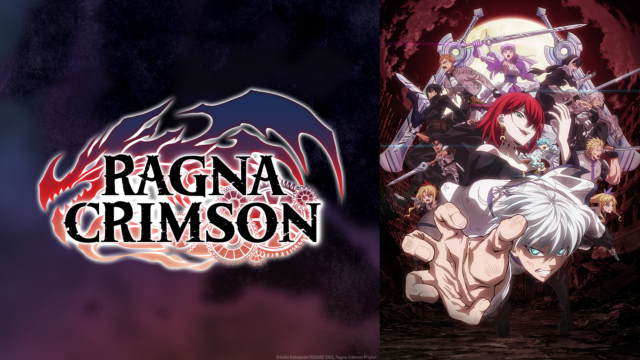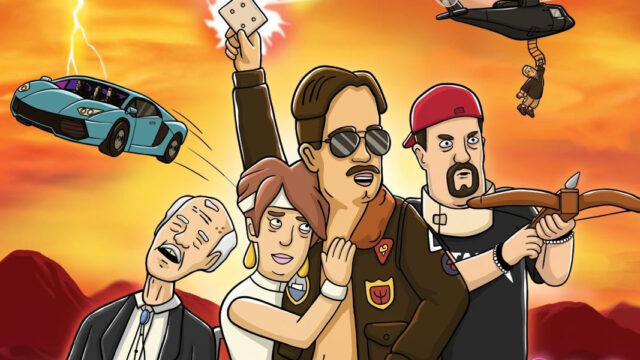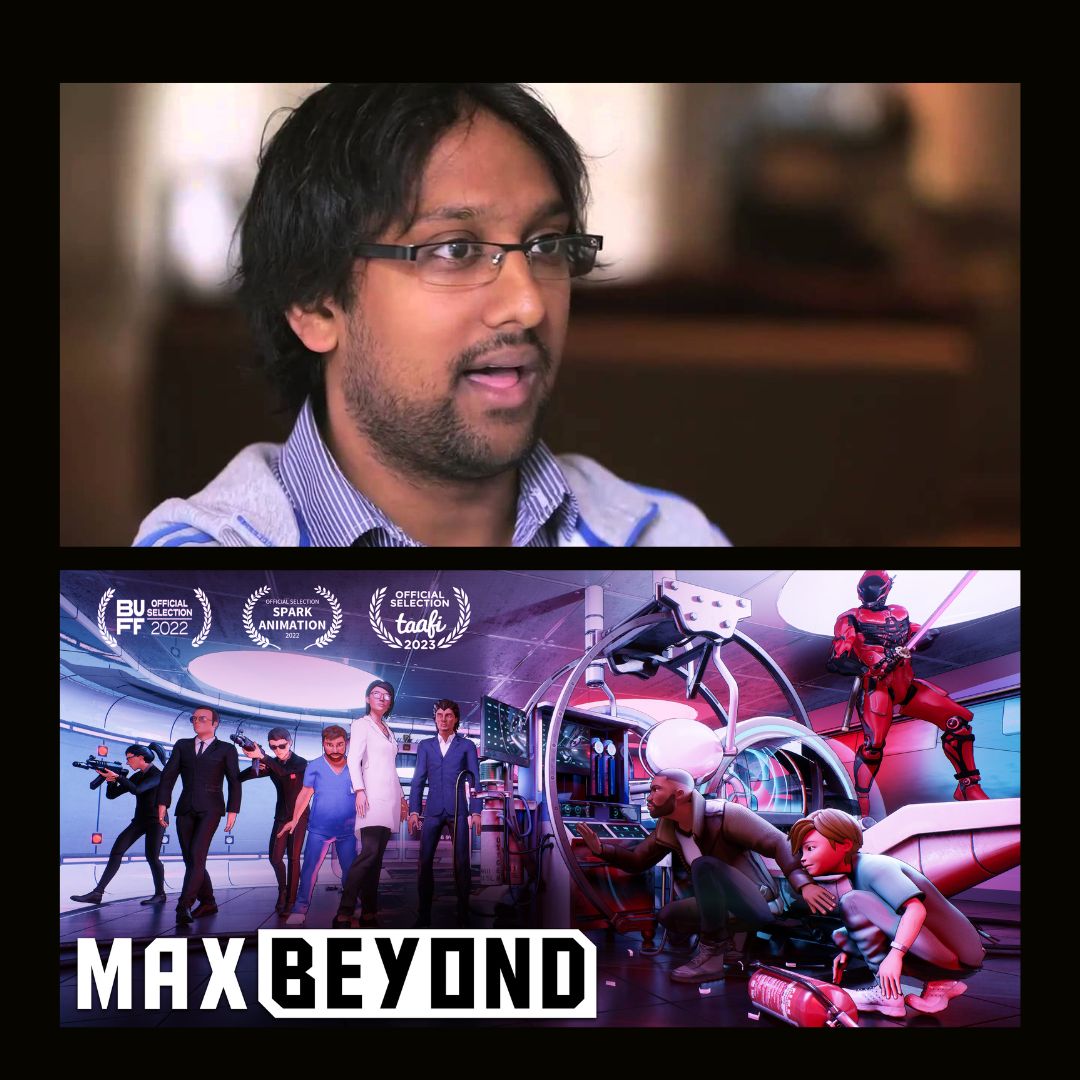English Dub Season Review: Mr. Tonegawa: Middle Management Blues Season One
Japanese society refracted through a cruelly zany prism.
Season Overview (Spoilers Below)
Yukio Tonegawa is the second in command at the megacorporation Teiai. Teiai is, at its core, a Japanese finance firm that operates like a legal loan shark. The company was founded by its current president, Hyōdō, Tonegawa’s boss. Hyōdō often orders Tonegawa, a doormat who rose to his position because of his unique tolerance for Hyōdō’s caprice, to do insane tasks that derail the younger man’s life, as well as occasionally contradict Hyōdō’s previous orders.
Luckily, Tonegawa is not alone in his quest to support President Hyōdō. He’s supported by Teiai’s junior executives, also known as black suits. They are called this because of Teiai’s dress code that requires them to wear the eponymous garment, along with a pair of sunglasses, at all times. The black suits want to do everything they can to help Tonegawa but are often more trouble than they’re worth. Tonegawa does all he can to mentor them, but only to varying degrees of success. Tonegawa’s two best black suits are Yamazaki, a young man who will do all he can to adhere to tradition, even to a fault, and Saemon, a young innovator who always thinks he has a better way to go about things.
Tonegawa’s main task is to come up with a series of deadly games to entertain the president. Hyōdō wants Teiai’s largest debtors to compete for their lives and fabulous prizes. Tonegawa and his team are left with the logistics. While they do come up with a deadly variant of Rock, Paper, Scissors, Team Tonegawa is often sidetracked. Sometimes it’s by things as mundane as personnel changes and low morale, but other times Tonegawa is tasked finding a body double for the president to prevent assassination attempts. Along the way, Tonegawa does his best to both appease his boss and teach his subordinates something useful.
Halfway through the show’s run, another middle manager enters the series. Otsuki is a foreman in Teiai’s underground work camp. As a foreman, he has control of the gambling underground and uses his winnings to finance days of freedom on the surface. We follow Otsuki through a number of his days out as he takes revenge on old enemies, samples much of Japan’s delicious food, and tries to grow his underground entertainment business. By the end of the series, most episodes are half Tonegawa and half Otsuki.
Our Take
If my description makes Mr. Tonegawa: Middle Management Blues sound like it doesn’t know what kind of show it is, then you’d be right on the money. The only barely-related Kaiji spinoff oscillates between about a half dozen ways of being, but it never really establishes just what the show is. While this is common for the first season of a show (even more common, the first five episodes after the pilot is entirely skippable), it does keep Mr. Tonegawa from reaching its full potential. This turns out to be a disappointment because when Mr. Tonegawa nails its satire, it can be pretty sharp.
The show works best when it functions as a commentary on modern Japanese lifestyles. Mr. Tonegawa, the character, represents a kind of Japanese everyman (at times). His black suits are representative of the incoming generation, always sure they and their technologies have a solution for everything. They will need the wisdom of an older generation to tell them why they are acting foolishly, sometimes. At the same time, however, these characters drive innovation and can do things that Mr. Tonegawa cannot (social media being the most prominent example).
On the flip side, there is Hyōdō. The president represents Japan’s massively aging population. They are still working long past the point of actually doing much in the way of contributing to the business, but hold on to their jobs and rely on those of Mr. Tonegawa’s generation to care for them as they age. Despite these foibles, though, their years of experience can certainly come in handy to younger people in the same business.
The show only stays in this mode for so long. The show also dips into Looney Tunes territory at times, it dispenses lessons about the free market and even dips into sentimentality towards the end of its long, twenty-four episode run. As such, it never quite finds its footing. While Mr. Tonegawa can succeed along any of these fronts for the majority of an episode, the lack of through-line (they abandon the death games for much of the show), the show never coalesces into more than the sum of its parts.
Mr. Tonegawa’s greatest weakness, though, is its lack of time management skills. The show only feels like it lurches about so is because it burned a lot of character building moments in the first few episodes for seemingly no reason. We are not introduced to most of our major characters until five or six episodes into the season, despite the fact that they are in the room for scenes as early as the pilot. This unforced error makes it harder to latch onto any character’s story other than Mr. Tonegawa’s, and even his potential as a character isn’t truly unlocked as a character until after midseason.
This goes double for the Otsuki problem. It’s baffling that a show that has yet to introduce the audience to all of its main characters would just start a back-up story halfway into its season. The two plots also only intersect once or twice, so there’s basically zero reasons to care about Otsuki. He’s also a far less interesting character than Tonegawa, so sacrificing twenty-five percent of the entire show to Otsuki is baffling.
Mr. Tonegawa, if anything, must suffer from either a writer’s room of wildly varying interests or a failure to define what the show is, at a show-running level. It could be both. I lament this issue, rather than castigate it because when the show works, it works. Mr. Tonegawa can be both funny and astute when it wants to be. It’s a shame then, that most of the time it just settles for being pleasant.
Score



























Hi Ashley, thank you so much for reading and we love the feedback. Note that on that day we had 14th posts go up and only ten posts show on the front page, so it's possible the preview had already been archived by the time you got to it. One recommendation would be to add our RSS feed to your favorite news aggregator service like Feedly, this way you get all of the latest posts!